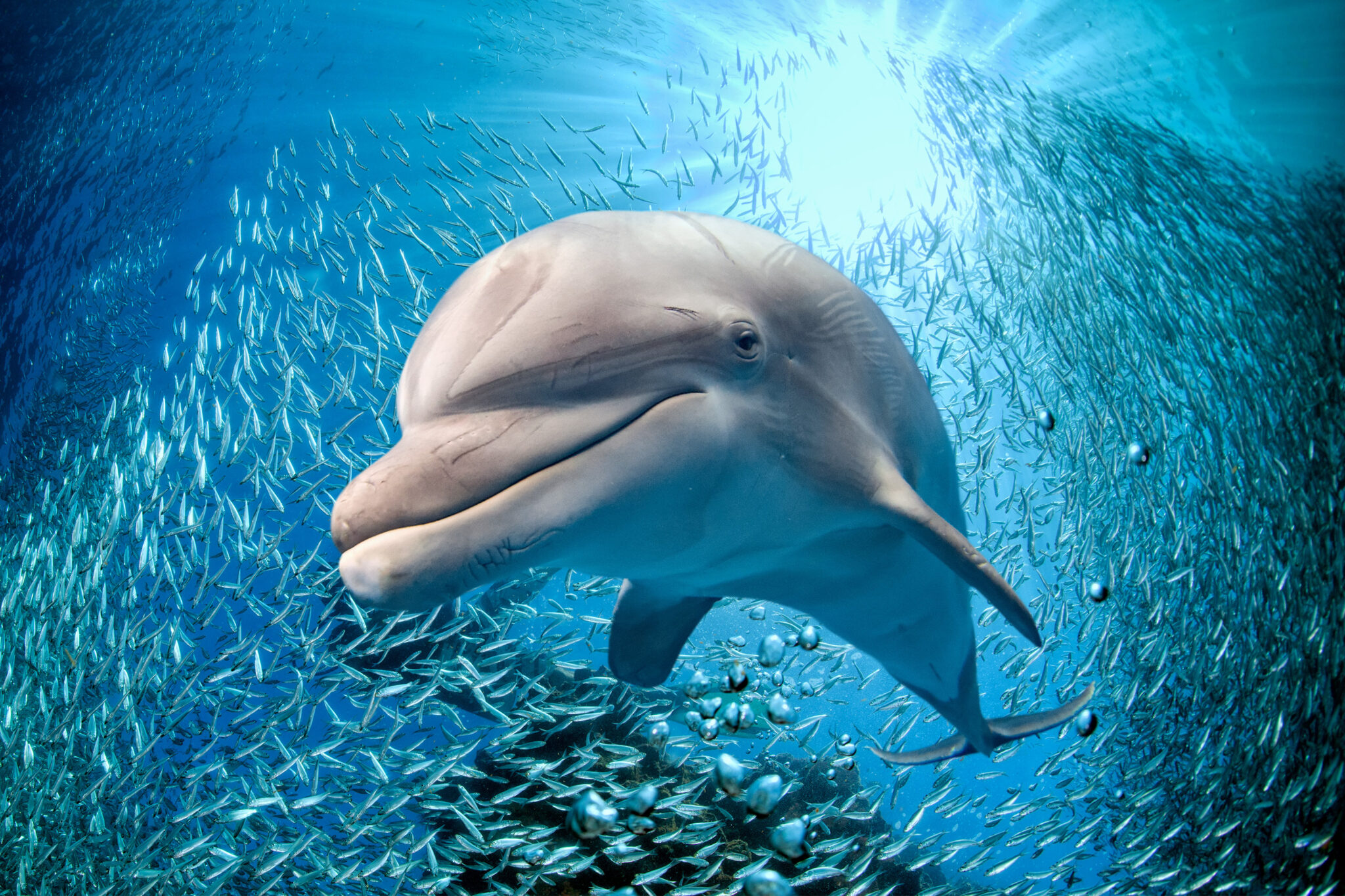Discover Rare Dolphin Facts That Make Them Special Amongst Marine Animals
Wiki Article
Study the Sea: Fascinating Dolphin Truths for Ocean Lovers
The globe of dolphins offers a remarkable junction of knowledge, social habits, and environmental relevance. With approximately 37 species, these marine creatures show a range of remarkable features that not just mesmerize ocean enthusiasts but additionally emphasize their crucial role in marine ecological communities. From their intricate interaction approaches to their excellent analytic capabilities, dolphins challenge our understanding of pet intelligence. However, the pressing need for conservation initiatives to secure these animals and their environments raises vital concerns about our responsibility in the direction of the ocean's residents. What effects do these aspects hold for our interactions with these exceptional beings?Dolphin Types Variety
Diversity is a trademark of the dolphin family members, encompassing a variety of types that show unique physical characteristics, habits, and environments. The household Delphinidae, commonly understood as nautical dolphins, makes up about 37 types, each adapted to certain eco-friendly specific niches. The bottlenose dolphin (Tursiops truncatus) is renowned for its knowledge and convenience, prospering in both coastal and open sea settings.On the other hand, the orca (Orcinus whale), typically described as the awesome whale, is the largest member of the dolphin household and is identified by its striking black-and-white coloration. Orcas demonstrate complicated social frameworks and hunting methods, showcasing the behavior variety within the family. Other types, such as the spinner dolphin (Stenella longirostris), are kept in mind for their acrobatic displays and preference for warmer waters, highlighting the versatility of dolphins to various marine communities.
Furthermore, river dolphins, including the pink river dolphin (Inia geoffrensis), populate freshwater settings, better showing the varied environments that dolphins occupy. Dolphin Facts. This amazing diversity not just enriches aquatic ecosystems however additionally stresses the significance of preservation initiatives to protect these remarkable animals and their atmospheres
Social Behavior and Interaction
The elaborate social behavior and interaction techniques of dolphins are crucial parts of their existence, helping with group communication and boosting survival. These very smart marine creatures display complicated social frameworks, usually forming pods that can vary from a few people to over a hundred. Within these groups, dolphins take part in actions such as participating hunting, social play, and shared security, which promote strong bonds amongst participants.Dolphins use an advanced array of articulations, including clicks, whistles, and body language, to convey information and share feelings. Their signature whistles act as special identifiers, akin to names, allowing individuals to call out to one an additional. This singing communication is enhanced by non-verbal signals, such as jumping, slapping the water, and integrated swimming, which additionally enhances their interactions.

Distinct Feeding Routines
Distinct feeding practices define dolphins, showcasing their versatility and intelligence in numerous aquatic environments. These aquatic creatures are known for their varied diet regimens, which mainly contain fish, squid, and crustaceans. Their hunting techniques can vary considerably, typically customized to the particular prey and ecological conditions.check these guys out One significant method is cooperative hunting, where dolphins work in teams to herd colleges of fish into tight developments, making it simpler for individuals to catch their dish. This social actions not just improves their feeding effectiveness but additionally reinforces social bonds within the skin. Additionally, dolphins have been observed using a technique called "fish-whacking," where they utilize their tails to confuse or stun fish, helping with much easier capture.
An additional interesting feeding practice is echolocation, which permits dolphins to find target even in dirty waters. On the whole, the special feeding practices of dolphins highlight their function as skilled killers within the marine ecological community, demonstrating both intelligence and resourcefulness.
Knowledge and Trouble Fixing
Their knowledge is apparent in their analytical abilities, social communications, and capacity for discovering. Study has demonstrated that dolphins can utilize tools, such as using marine sponges to secure their rostrums while foraging on the seafloor.In addition, dolphins exhibit sophisticated interaction abilities, employing an intricate system of clicks, whistles, and body movement. Dolphin Facts. This interaction is critical for coordinating group activities, such as searching and mingling, highlighting their capability to function jointly towards an usual objective. Their capability to recognize abstract principles, consisting of self-recognition in mirrors, better highlights their cognitive sophistication
In controlled studies, dolphins have revealed a capacity to address problems and perform tasks that require both memory and critical reasoning. These interactions indicate not only intelligence but great post to read also a willingness to involve with their atmosphere in novel means. On the whole, the cognitive expertise of dolphins positions them amongst one of the most intelligent species on earth, fostering a deeper recognition for their role in aquatic communities.
Conservation and Environmental Effect
Preservation initiatives targeted at protecting marine ecosystems are crucial for preserving dolphin populaces and their environments. Dolphins are extremely delicate to environmental modifications, and their survival is click for more info delicately connected to the health of nautical ecological communities. Overfishing, contamination, and climate change present significant dangers to both dolphins and their settings.Overfishing disrupts the food web, causing a decline in prey varieties vital for dolphin survival. Additionally, pollutants such as chemicals and plastics collect in marine atmospheres, threatening dolphins with intake and bioaccumulation. Boosted water temperatures and sea acidification, consequences of environment change, additionally threaten the fragile equilibrium of marine environments, affecting dolphin reproduction and migratory patterns.
By prioritizing conservation initiatives, we can ensure that future generations delight in the appeal and vigor of dolphins and the oceans they occupy. Shielding aquatic environments is not simply concerning conserving dolphins; it is concerning preserving the elaborate web of life that maintains us all.
Conclusion
Dolphins exhibit the complexity and richness of aquatic life via their varied varieties, detailed social frameworks, and progressed cognitive abilities. Their one-of-a-kind feeding behaviors and communication techniques better highlight their adaptability and intelligence. As important parts of aquatic communities, dolphins highlight the necessity of ongoing conservation efforts to guard their habitats. Safeguarding these amazing animals is essential not just for their survival yet also for maintaining the wellness and equilibrium of sea settings internationally.Other species, such as the spinner dolphin (Stenella longirostris), are kept in mind for their acrobatic displays and choice for warmer waters, highlighting the adaptability of dolphins to various aquatic ecological communities.
Generally, the special feeding routines of dolphins highlight their duty as knowledgeable predators within the marine environment, showing both knowledge and resourcefulness.
On the whole, the cognitive prowess of dolphins puts them amongst the most smart varieties on the earth, promoting a much deeper recognition for their role in aquatic communities.

Report this wiki page